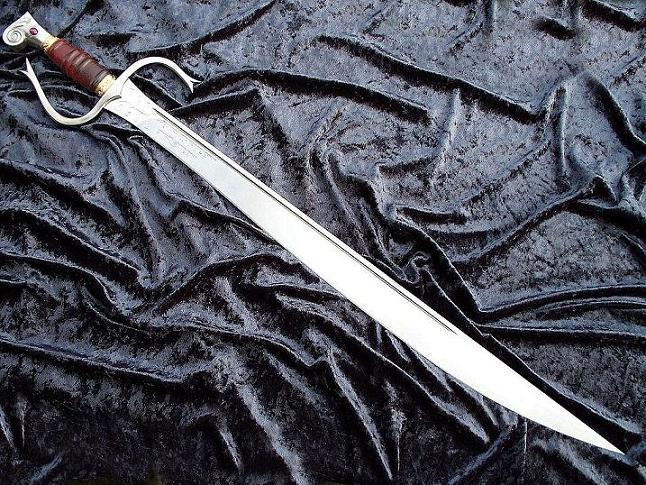My new falchion weighs 3.30 lbs. with a 30" long x 2' wide blade .Is that out of line with original weights?
Thanks in advance


| Karl Knisley wrote: |
| Hello
My new falchion weighs 3.30 lbs. with a 30" long x 2' wide blade .Is that out of line with original weights? |
| Matthew P. Adams wrote: |
| Does the spine of the blade taper distally? If I saw a blade like that I would expect it to have a dramatic convex distal taper at the beginning of the swell, remaining thin up to a couple inches from the tip, and then see a bit of thickening at the spine to create a strong thrusting point.
It's a beautiful piece however you "slice" it. And as far as I understand, a sharp hard blade would bite into a helmet, and cause more force to be transferred than a duller blade BUT attacking a helmet on purpose with a cut would be avoided if at all possible. If it were me, I'd be more tempted to hit a helmet with the back of the blade. |